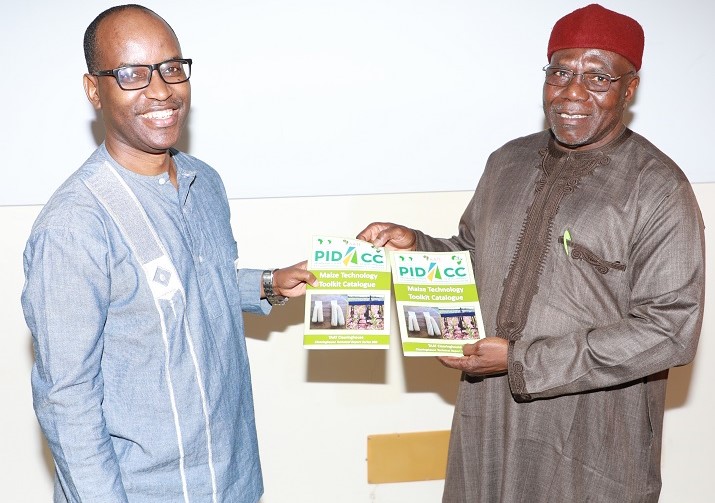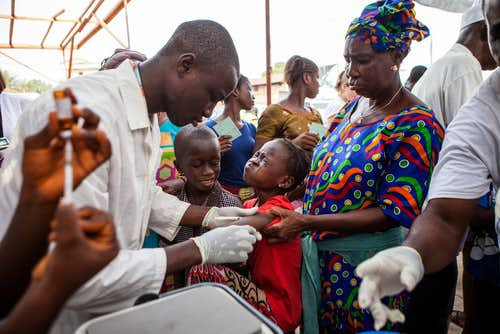By Greg Odogwu
Monday, 23rd March, was celebrated globally as World Meteorological Day (WMD). Since 1961, WMD has commemorated the coming into force on 23 March 1950 of the Convention establishing the World Meteorological Organization (WMO) and the essential contribution that National Meteorological and Hydrological Services make to the safety and well-being of society.
The WMO, as the successor of the International Meteorological Organization, created in 1873, has its fundamental mission to support the countries of the world in providing meteorological and hydrological services to protect life and property from natural disasters related to weather, climate and water, to safeguard the environment, and to contribute to sustainable development.
The theme for this year, “Climate knowledge for climate action,” provides an opportunity to take stock of the climate knowledge built in the last decades as an essential base to support the path towards more ambitious action to address climate change and climate variability. It is also chosen to draw attention of the global community to the need for action to address climate change.
In this regard, one can immediately recall the serial climate reports emanating from the Intergovernmental Panel on Climate Change (IPCC). Its Fifth Assessment Report, released last year, was a strident wake up call to the world as to the indubitable reality of climate change.
Interestingly, IPCC was jointly created by the WMO and UNEP. And because of its monumental contribution, the IPCC received the Nobel Peace Prize in 2007 “for their efforts to build up and disseminate greater knowledge about man-made climate change, and to lay the foundations for the measures that are needed to counteract such change”.
The WMO is a specialised agency of the United Nations. With 191 nations as members, it is the UN system’s authoritative voice on the state and behaviour of the Earth’s atmosphere, its interaction with the oceans, the climate it produces and the resulting distribution of water resources.
The World Meteorological Congress determines the policy of WMO and meets every four years. Each Member country is represented by a Permanent Representative with WMO. The Permanent Representative should be the director of the National Meteorological or Hydrometeorological Service.
Nigeria is represented by the Nigerian Meteorological Agency (NiMet) at the WMO. The country is also one of its 37-members Executive Council (EC). The EC implements Congress decisions and meets once a year.
Emerging trends in the Nigerian meteorological sector has made it clear that NiMet is now a global trail blazer. One of its products, the Seasonal Rainfall Prediction (SRP), which provides the annual weather and climate outlook for the country, was recently given heart-warming thumbs up by the WMO, when its representative for North and West Africa, Mr Benard Gomez, acknowledged that countries in the world are adopting the success product that the SRP represents in their own meteorological operations.
What is more, Nigeria’s Minister of Aviation, Mr Osita Chidoka last month commissioned the Information and Communications Technology Centre and Scientific & Technical Information Library of the NiMet in Abuja. The centre is designed to enhance data collection, processing, storage and application for product generation in the different areas of meteorology such as aeronautical, hydro-meteorology, agro-meteorology, marine and climate services. The centre receives real time numerical and satellite data for processing, archiving and dissemination to various end users including the international community.
It hosts the Numerical Weather Prediction clusters, e-Met server, Clidata (Data Management System), Meteorological Cluster Integrating all automatic weather observing system across the country, receiving, archiving and re-distributing satellite imageries from RETIM, Meteosat Second Generation, Receiving Satellite Distribution System for aeronautical services and Video Conferencing Facility.
The NiMet High Performance Computer Cluster for Numerical Weather Prediction is the latest development in hardware architecture whose configuration for numerical weather processing increases the computational power in order to enhance vertical and horizontal resolution. It is the cornerstone of weather forecasting for effective aeronautical service delivery, weather and climate research. Nigeria is one of the top five countries in Africa to simulate its local weather in diagnostic and prognostic mode using similar infrastructure.
The system provides aviation forecasts (surface wind and spot winds at different flight levels, surface air temperature and temperature at different flight levels, surface pressure and pressure at different levels, precipitation rate at different levels, turbulent flux at different levels and clouds at different levels); more accurate and timely weather forecast and for an extended period of 5 – 7days.
It also provides point-to-point city forecasts; specific and customised products for key socio-economic sectors (agriculture, water management, sports, social activities, tourism, construction, marine, oil and gas exploration on rigs, sea ports) using the application models.
Most importantly, it provides weather information that includes those for severe weather alerts in extended lead time to enhance safety in flight operations; and early warning forecasts for floods, thunderstorms and strong winds. To me, this is the most critical task because of its potential to strategically enhance the early warning infrastructure of the country, and automatically, disaster risk reduction in these times of emerging impacts of climate change.
Meteorology is important because it is one of the vital landmarks of modern civilisation. Once upon a time, everything about the weather was shrouded in mysticism. Animals and humans were sacrificed by early men with a view to placating ‘gods’ who were thought to manifest their anger and mood swings via diverse weather and climatic conditions. But today, the science of meteorology has lifted the veil of superstition from the causes of changes in weather.
More importantly, meteorology is a source of national income. Studies have shown that, apart from the incalculable benefit to human well-being, every dollar invested in meteorological and hydrological services produces an economic return many times greater, often ten times or more.
Superficially, one may ask, how can an agency which provides intangible services like weather forecasts generate revenue? A quick answer could be found in the United Kingdom Meteorological Office. This office generates an equivalent of about 50 billion naira annually from the provision of core and spatial weather and climatic information to several sectors of the British economy ranging from maritime, aviation, construction, agriculture and a host of others.
This is why it gladdens the heart that NiMet had embarked on an understudy programme of the UK Met Office’s operations and subsequently signed a Memorandum of Understanding with the British weather organisation, with the primary aim of exchanging information and capacity building especially in the aspects of Marine meteorology. According to the agency, also contained in the MoU are modalities for harnessing the potentials in the Oil and Gas sector which constitutes a major chunk of the revenue generated by the UK Met office.
This will be a watershed in the evolution of NiMet because streamlining meteorological information in this sector shall not only generate income for the country, but shall effectively become a vehicle for localising environmental support data structure for the Niger Delta.
It is remarkable to note that NiMet has been transformed and repositioned to continue contributing to climate knowledge, not only in the country but also in the sub-region, and indeed globally. Its weather studios have been very active in producing daily Public Weather services, not only for Nigeria but also for Sierra Leone. Liberia and the Gambia have also indicated interest for similar support from NiMet.
In addition to these services, its instruments calibration laboratory carried out the calibration of meteorological instruments for Ghana Meteorological Agency. As a matter of fact, the instrument calibration facility is available in only four countries in Africa: Egypt, South Africa, Kenya and now Nigeria. By offering this service, Nigeria becomes the first country in West Africa and a first class destination for instrument calibration.
Another emerging trend is NiMet’s plans to build weather FM radio stations in each of Nigeria’s six geo-political zones. The radio stations, which would be built with funds from the agency’s internally generated revenue, will disseminate climatic and weather information through broadcasts targeted at stakeholders within the zones. The broadcasts will give early warning signals of potential disasters occasioned by adverse weather and climatic conditions.
No doubt, while also generating money from commercial advertising slots, this would be of enormous value to the public, especially the vulnerable communities living around the flash points of flooding, erosion or desertification.
It will be interesting to note that one of broadcasting’s original purposes, predating its use as an entertainment medium, was to spread news of maritime weather conditions.
In this, Nigeria could learn from the USA. America’s NOAA Weather Radio is provided as a public service by the National Oceanic and Atmospheric Administration. As of 2014, NWR has about 1032 transmitters serving 95% of the United States’ population, covering all 50 US states, adjacent coastal waters, and the territories of Puerto Rico, the US Virgin Islands, Guam, American Samoa and Saipan.
In all, what remains to be done is to strengthen the ways that climate knowledge is utilised in Nigeria. This is a task for many stakeholders including the media. But it is very important that the Nigerian Government concludes the institutionalisation of the National Framework for Application of Climate Services because this is the platform that shall enable the relevant arms of government utilise the weather and climatic information coming from NiMet for national development, and quick, efficient intervention in times of eco-emergencies.













The DG of NiMet Dr Anthony Anuforom is a genuis. He has revolutionalized NiMet to a point that the blind can see his his handwork. The fact remains that, NiMet services are reliable and second to non in sub-saharan Africa